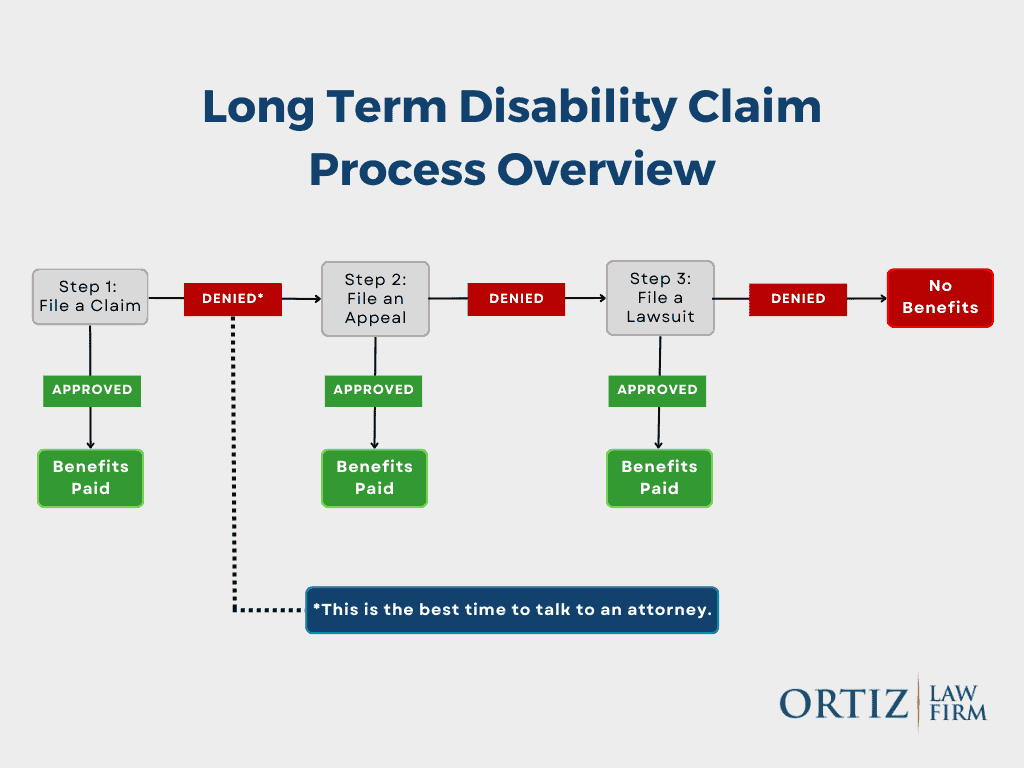On This Page[Hide][Show]
Long-term disability claims for cervical instability can be complex and challenging to navigate. If you’re dealing with this condition, understanding the process of filing a long-term disability claim is crucial. From gathering medical evidence to presenting a convincing case, securing the benefits you deserve requires careful attention to detail and thorough documentation. On this page, we will explore the key steps involved in pursuing a long-term disability claim for cervical instability, empowering you with the knowledge to advocate for your rights effectively.
Understanding Cervical Instability and Long-Term Disability Claims
What Is Cervical Instability?
Cervical instability is characterized by excessive movement between the vertebrae in the neck, often resulting from injury to the cervical spine or degenerative changes in the spine. This abnormal movement can lead to pain, discomfort, and limited mobility, mimicking symptoms of many other conditions.

However, there are key symptoms that may indicate instability of the cervical spine, such as:
- Having trouble holding your head up for a long time
- Feeling like your head is heavy
- Pain in the upper neck near the bottom of the skull
- Pain that spreads to the shoulder
- Stiff or tight neck
- Frequent headaches
- Soreness in the neck and bottom of the head
- Shakiness in the neck/head
- Feeling dizzy
- Difficulty with balance
In some cases, cervical instability can cause spinal cord or nerve root compression, leading to neurological symptoms such as numbness, tingling, or weakness in the arms and hands.
People with Ehlers-Danlos Syndrome often experience cervical instability as a symptom of their condition. Rheumatoid arthritis and other arthritic conditions can also lead to cervical instability due to the progressive deterioration of the joints and vertebrae in the neck.
Impact of Cervical Instability on Daily Life
Living with cervical instability can significantly impact daily life. Simple tasks such as turning your head, lifting objects, or even holding a phone can become challenging and painful. Individuals with cervical instability may experience persistent neck pain, frequent headaches, and difficulty maintaining a comfortable position for extended periods. These limitations can affect their ability to work, engage in leisure activities, and carry out routine household chores.
Hypermobile Patients and Their Unique Challenges
Hypermobile individuals naturally have increased joint flexibility and range of motion and face unique challenges when dealing with cervical instability. Their already flexible joints can exacerbate the instability, causing more pain and discomfort. Additionally, the diagnosis and management of cervical instability in hypermobile patients require specialized knowledge and treatment approaches to address their specific needs. Accommodations and therapies tailored to hypermobile individuals are essential for effectively managing their condition and mitigating the impact on their daily lives.
Long-Term Disability Claims Process

Eligibility Criteria for Long-Term Disability (LTD) Insurance
To qualify for long-term disability (LTD) insurance, individuals must meet specific medical criteria, often involving the inability to perform job-related tasks due to a medical condition. For cervical instability, the eligibility criteria typically require a diagnosis from a medical professional, demonstrating the severity of the condition and its impact on the individual’s ability to work. Additionally, individuals may need to provide evidence of ongoing treatment and efforts to improve their condition through medical intervention.
Documenting Medical Evidence for Cervical Instability
Documenting medical evidence for cervical instability is crucial when filing for long-term disability. This includes detailed medical records, diagnostic imaging results, treatment plans, and medical opinions from specialists. It’s essential to compile comprehensive documentation that clearly illustrates the impact of cervical instability on the individual’s daily life and work-related activities. Providing a detailed account of symptoms and limitations can significantly strengthen the long-term disability claim.
Filing a Long-Term Disability Claim for Cervical Instability
When filing a long-term disability claim for cervical instability, it’s essential to follow the specific procedures outlined by the insurance provider. This typically involves completing claim forms, submitting the gathered medical evidence, and providing a detailed account of how cervical instability hinders the ability to perform essential job functions. Seeking assistance from a legal professional experienced in handling long-term disability claims can also be beneficial in navigating the complex filing process.
Common Challenges and Pitfalls
Denial of Long-Term Disability Claims for Cervical Instability
Facing a denial of a long-term disability claim for cervical instability can be disheartening and overwhelming. Common reasons for denial may include insufficient medical evidence, failure to meet the policy definition of disability, or incomplete claim forms. It is crucial to carefully review the denial letter to understand the specific reasons for the denial and to gather all relevant medical records and documentation to counter these reasons.
Appealing a Denied Long-Term Disability Claim
When appealing a denied long-term disability claim for cervical instability, it is essential to follow the appeal process outlined by the insurance provider meticulously. This involves submitting additional medical evidence, supportive statements from healthcare providers, and any other relevant documents within the designated timeframe.

Crafting a compelling appeal letter that addresses the reasons for the denial and presents a strong case for the claimant’s disability is crucial. Seeking legal assistance from an experienced attorney specializing in long-term disability claims can significantly increase the chances of a successful appeal.
Securing Long-Term Disability Benefits
Understanding Long-Term Disability Insurance Policies
Your long-term disability insurance policy will outline the criteria that must be met to qualify for benefits, the duration of coverage, and the extent of financial support provided. Familiarizing yourself with the terms and conditions of your specific policy is essential for navigating the claims process and ensuring you receive all the benefits you are entitled to.
Key components to consider include the definition of disability, waiting periods, and the medical evidence required to prove disability. It is crucial to grasp the requirements for establishing eligibility and the ongoing obligations for maintaining benefits. Thoroughly comprehending your insurance policy enables you to make informed decisions and take proactive steps to strengthen your claim.
Working with a Disability Lawyer
Navigating the complexities of long-term disability claims for cervical instability can pose numerous challenges. Many claimants seek out the services of a disability lawyer, especially after a claim denial. These legal professionals specialize in advocating for individuals seeking long-term disability benefits, providing invaluable expertise, guidance, and representation throughout the appeal process.
We have a “No Recovery, Zero Fee Guarantee.” This means our clients only pay a fee when disability benefits are recovered.

A disability lawyer can offer comprehensive support, including completing claim forms, gathering essential medical evidence, filing your appeal, and preparing for potential lawsuits. By leveraging their knowledge of disability law and experience in handling similar cases, a skilled attorney can help you navigate the complexities of the long-term disability claim process confidently and assertively to secure the benefits you need.
Request a Free Case Review
Remember, diligence and attention to detail are key when pursuing long-term disability benefits for cervical instability. It requires thorough documentation of medical evidence, clear communication with healthcare providers, and a strong understanding of the specific requirements of your insurance policy. Seeking legal guidance from an experienced attorney specializing in disability claims can significantly enhance your chances of a successful outcome.
The Ortiz Law Firm is a national disability law firm in Pensacola, Florida. Under the leadership of long-term disability attorney Nick Ortiz, we help individuals across the country obtain the disability benefits they deserve. Call the Ortiz Law Firm at (888) 321-8131 to schedule a free case review today.

